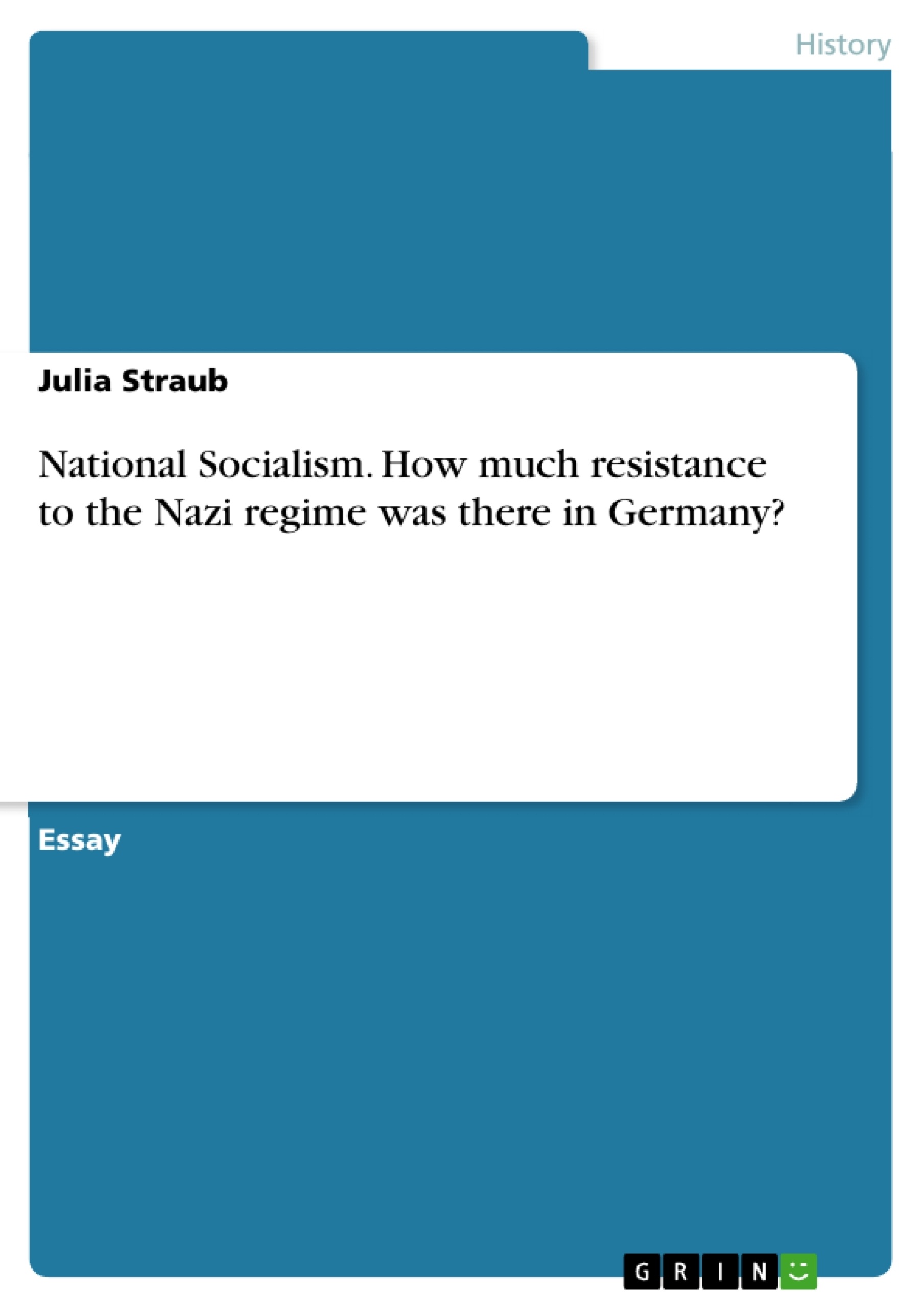Germany under the regime of Hitler and the Nazis was without a doubt the darkest period of German history. But although the number was small, some Germans indeed tried to resist National Socialism. This essay will deal with this minority of Germans. It aims to answer the question of how much resistance there really was in Germany. Because even though the resistance was small, and they were unable to overthrow Hitler’s regime, it is still a relevant topic to discuss and historians have not settled on one opinion yet.
The essay will foremost deal with the question of what forms of resistance there were and what impact they had. But to answer these questions, the essay will start with the question “What is resistance?”, as this is not an easy term to define. The main part of the essay deals with the different forms of resistance which will be analysed by giving examples of people and groups who represented individual forms of resistance. The essay will focus only on the most important forms and events as not all of them can be covered in the size of the essay. The last point will deal with the importance of resistance to the Nazi regime and what impact it had, which is also connected to the question, why the resistance was not bigger.
Inhaltsverzeichnis (Table of Contents)
- Introduction
- What is resistance?
- Forms of resistance
- German military resistance
- Catholic/Protestant resistance
- Communist/Working class resistance
- Youth resistance
- Importance/Impact of resistance
- Conclusion
Zielsetzung und Themenschwerpunkte (Objectives and Key Themes)
This essay aims to investigate the extent of resistance to the Nazi regime in Germany during the period of Hitler's rule. It examines the various forms of resistance that emerged within German society, analyzing their characteristics and evaluating their impact on the Nazi regime. The essay focuses on the active resistance, exploring different groups and individuals who challenged the regime through different means.
- The different forms of resistance to the Nazi regime in Germany.
- The impact and significance of resistance on the Nazi regime.
- The challenges and complexities of defining resistance in the context of the Nazi era.
- The motivations and goals of various resistance groups and individuals.
- The consequences of resistance for those who participated in it.
Zusammenfassung der Kapitel (Chapter Summaries)
The introduction establishes the context of the essay by acknowledging the dark period of Nazi rule in Germany and introduces the focus on resistance. It highlights the importance of exploring resistance, even though it was small in scale and ultimately unsuccessful in overthrowing the regime.
Chapter 2 examines the complexities of defining resistance, exploring the diverse interpretations and approaches to defining the term, both broadly and narrowly. It highlights the ongoing debate among historians regarding the scope and nature of resistance.
Chapter 3 delves into the different forms of resistance, specifically focusing on the German military, churches, communist and working class, and youth. It explores the motivations, strategies, and challenges of these resistance groups and individuals, acknowledging their varying levels of success and impact.
Chapter 4 focuses on the importance and impact of resistance on the Nazi regime. It addresses the question of why resistance was not larger in scale and explores the significance of the actions of individuals and groups who dared to oppose the regime, despite the risks involved.
Schlüsselwörter (Keywords)
The key terms and topics explored in this essay include resistance, Nazi regime, Germany, German history, forms of resistance, German military, Catholic/Protestant resistance, communist/working class resistance, youth resistance, impact of resistance, historical analysis, political opposition, ideology, and the complexities of defining resistance.
- Citar trabajo
- Julia Straub (Autor), 2018, National Socialism. How much resistance to the Nazi regime was there in Germany?, Múnich, GRIN Verlag, https://www.grin.com/document/464334




